Sahadevi: Vernonia cinerea Benefits, Remedies, Research, Side Effects
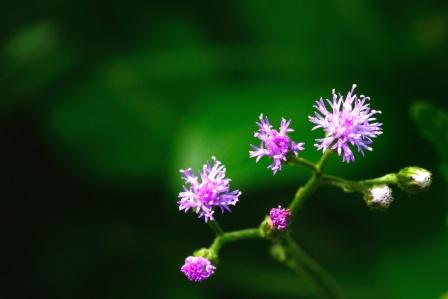
Sahadevi – Vernonia cinerea is a herb mentioned in the ayurvedic pharmacopeia for the treatment of fever, localized swelling, wounds, renal calculi, skin diseases and elephantiasis. It is called Purple fleabane in English.
Latin Name- Vernonia cineria Less.
Family- Compositae (Bhringaraja kula)
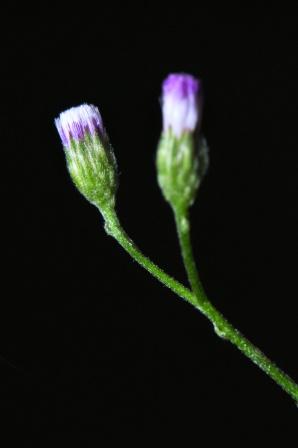
Table of Contents
Vernacular names
Sahdevi – Names in different languages:
Hindi name- Sahadevi, Sahdebi, Sahadebi
English name- Purple fleabane, Little ironweed
Bengali name- Kukasim
Gujarathi name- Sadori
Kannada name- Sahadevi
Marathi name- Sadodi
Malayalam name- Puvanakodantel
Tamil name- Naichotte poonde
Telugu name- Gariti Kamma

Sanskrit synonyms
Sanskrit Synonyms of Sahadevi –
Dandotpala, Uttamkanyaka, Mahabala, Katambhara, Kesharuha, Kesarika, Keshavardhani, Devasaha, Sarini, Mrugadani, Peetapushpi, Devarha, Mruga, Mrugasara.
Varshapushpa – flowering happens in rainy season
Classical categorization
Bhavaprakasha- Guduchyadi varga
Raja Nighantu- Shatahvadi varga
Shodala Nighantu- Lakshmanadi varga
Scientific classification
Kingdom: Plantae
Order: Asterales
Family: Asteraceae
Tribe: Vernonieae
Genus: Vernonia
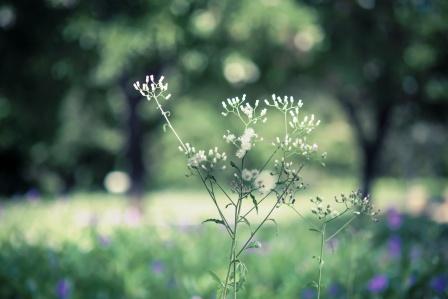
Sahadevi is a small shrub found all over India in the temperate climate, growing to a height of 0.5 feet to 3 feet. The leaves have a hairy surface beneath and the flowers are purple or pink colored blooming in the rainy season.
Properties, part used, dosage
Vernonia cinerea medicinal properties:
Rasa (Taste) – Tikta (Bitter)
Guna (Qualities) – Laghu (Light for digestion), Ruksha (Dry in nature)
Vipaka – Katu (Undergoes Pungent taste after digestion)
Veerya (Potency) – Ushna (Hot)
Karma (Actions) – Kaphavata shamaka (reduces vitiated kapha and vata dosha)
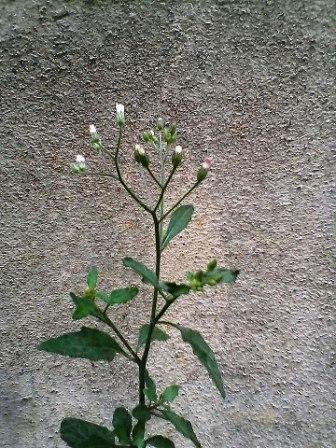
Part used- Root
Dosage:
Fresh juice- 10 to 20 ml
Decoction of root- 50 to 75 ml
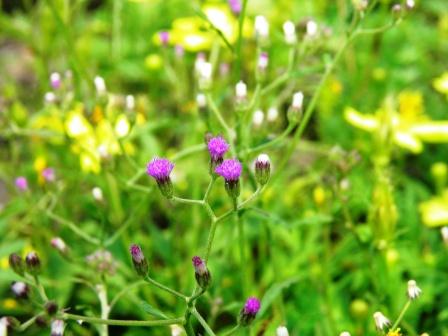
Chemical constituents
Chemical constituents of Vernonia cinerea:
The plant contains luteolin-7 mono- beta-D- glucopyranoside along with triterpene compounds like beta-amyrin acetate, lupeol acetate. The sterols- beta-sitosterol, stigmasterol and alpha-spinasterol are available in the plant.
Types
Types: As per Raja Nighantu, 2 varieties, based on flower color
Shweta – white
Neela – Blue
Uses
Medicinal uses of Vernonia cineria:
- The paste of the leaves and stem is prepared and applied over the wounds and localized swelling as treatment.
- The decoction prepared from the root and stem of Vernonia cineria is administered in a dose of 40-50 ml to treat cases of renal calculi and burning micturition.
- The cold infusion prepared from the root and stem of Sahadevi is given in a dose of 50-60 ml to treat fever caused due to indigestion.
- The paste from the root of Vernonia cineria is applied externally over the area affected with Elephantiasis.
- In cases of insomnia, the paste prepared from the root of Sahadevi is applied over the scalp region as part of treatment.
- The decoction or cold infusion made from the root and leaves of Sahadevi is given in a dose of 50 ml to treat skin diseases and as blood purifier.
- The decoction of root in a dose of 30-40 ml is administered to treat intestinal worms.
- The cold infusion prepared from the leaves and root of Sahadevi is given in a dose of 50-60 ml to treat constipation.
Sanskrit verse
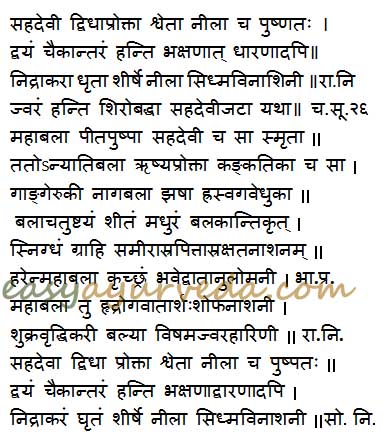
Indications
Ayurvedic uses of Vernonia cinerea:
Nidrakara – induces sleep
Grahi – absorbent, useful in diarrhea, IBS
Sameerajit – Vatahara – useful in treating disorders of Vata Dosha imbalance such as neuralgia, paralysis, constipation, bloating, etc
Indicated in –
Asrapitta – Bleeding disorders such as nasal bleeding, heavy periods, etc
Shukrakara – Shukrala – improves sperm and semen quantity and quality
Kshata – injury, bleeding
Vishamajwara – Intermittent fever
Sidhma Kushta – skin disease
Usage of Sahadevi in fever:
Charaka has mentioned that Root of this herb is tied to the head to reduce fever. There should be some truth in this. The root is known to accumulate nickel, zinc, copper and manganese in it –1
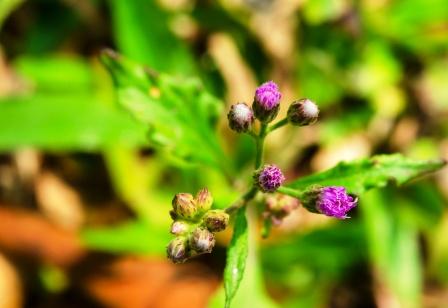
Adverse effects
Adverse effects of Sahadevi: No adverse effect is observed from the normal dose of Sahadevi herb.
Interaction with medicines, supplements
Can this be used while taking Homeopathic medicine?
Yes. This product does not react with homeopathic medicine.
Can this medicine be continued while taking supplements like multivitamin tablets, Omega 3 fatty acids etc?
Yes. Generally, this product goes well with most dietary supplements. However, if you are taking more than one product per day, please consult your doctor for an opinion.
With western
medicines
Seek your
doctor’s advice if you are taking this product along with other western
(allopathic / modern) medicines. Some Ayurvedic herbs can interact with modern
medicine.
If both Ayurvedic and allopathic medicines are advised together, then it is
best to take Allopathic medicine first, wait for 30 minutes and then take the
Ayurvedic medicine.
Ayurvedic formulations
Formulations containing Sahadevi:
Pelo hair cream: It is an ayurvedic proprietary medicine useful for controlling premature graying of hair, hair fall and loss.
Epderm capsule: It is an ayurvedic proprietary medicine in capsule form for the treatment of vitiligo, psoriasis and other skin diseases.
Hairich oil: It is an ayurvedic proprietary medicine in oil form used for external application for total hair growth and health, cures dandruff, poor memory, baldness, gray hair and insanity.
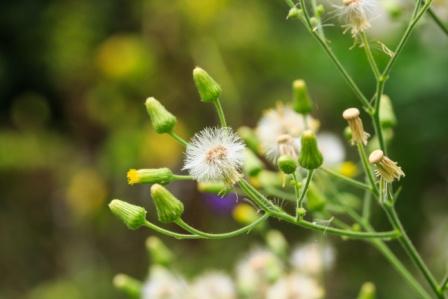
Research
Research articles about Vernonia cineria:
Cyto protective effect: The extract of Vernonia cineria is found to be effective against nicotine toxicity on human umbilical vein endothelial cells.
Anti- oxidant effect: In this study, the ethanolic extract of Vernonia cineria plant leaves were investigated for the antioxidant and hepatoprotective effects in male Wistar strain albino rats. The effect of extract on the activities of superoxide dismutase (SOD), catalase (CAT), glutathione reductase (GR), glutathione S-transferase (GST) and reduced glutathione (GSH) content were estimated in the liver of rats intoxicated with CCl4. When compared to the CCl4 treated group of rats, the extract significantly (p<0.05) increased the levels of SOD, CAT, GR, GSH, and GST. The extract also showed antioxidant effects by significantly decreasing (p<0.05) on FeCl2-Ascorbate induced lipid peroxidation in rat liver homogenate.
Anti- diarrheal activity: The present study was conducted with the objective of investigating the anti- diarrheal activity of Vernonia cinerea. The plant extracts were collected through cold extraction methods. The time of onset of first wet feces increased significantly and dose dependently by the extract.
The aim of the present study is to investigate the ameliorative potential of ethanolic extract of the whole plant of Vernonia cinerea in the chronic constriction injury (CCI) of sciatic nerve induced neuropathic pain in rats. Ethanolic extract of Vernonia cinerea and pregabalin were administered for 14 consecutive days starting from the day of surgery. CCI of sciatic nerve has been shown to induce significant changes in behavioral, biochemical and histo-pathological assessments when compared to the sham control group. Vernonia cinerea attenuated in a dose dependent manner the above pathological changes induced by CCI of the sciatic nerve, which is similar to attenuation of the pregabalin pretreated group. The ameliorating effect of ethanolic extract of Vernonia cinerea against CCI of sciatic nerve induced neuropathic pain may be due to the presence of flavonoids and this effect is attributed to anti-oxidative, neuro-protective and calcium channel modulator actions of these compounds.
Author: Dr.B.K.Prashanth M.D (Ayu), Ph.D
E mail: [email protected]
Sthanika Karma (Systemic Action)
External Application – External Application – It has Anti inflammatory, Analgesics and Antipyretic properties. In fever its juice can be used for external application on the body. In conjunctivitis and in Snayuka krimi leaf paste is beneficial for external application. Root of this herb is tied to the head to reduce fever.
Internal administration-
Digestive system – Ant helminthic, facilitates movement of doshas in proper direction. Indicated in Helminthiasis and in Hemorrhoids.
Circulatory System – Blood purifier. Indicated in Elephantiasis.
Excretory system –increases urine output. Helps to crush and expels out urinary calculi.
Tvak – Increases sweat production. Indicated in skin diseases.
Tapakrama – Indicated in fever(Jirna jvara / vishama jvara )











7 comments
Dr.saroja
Gd information by dr Prashanth regarding sahadevi
Rks
Very good detailed information and thanks for the pics , which will be helpful in recognizing it.
Ankush verma
Sir you give lot of information about shadevi .thanks!
Dr J V Hebbar MD(Ayu)Author
Welcome 🙂
santosh prabhakar pore
sir i have headache problem for last 34years because of stress .i can not sleep well.i read about sahadevi plant to cure headache.
Dr J V Hebbar MD(Ayu)Author
Sorry that I do not know its source.
vijay
very informative and useful contents…tha ks for such an very good article..